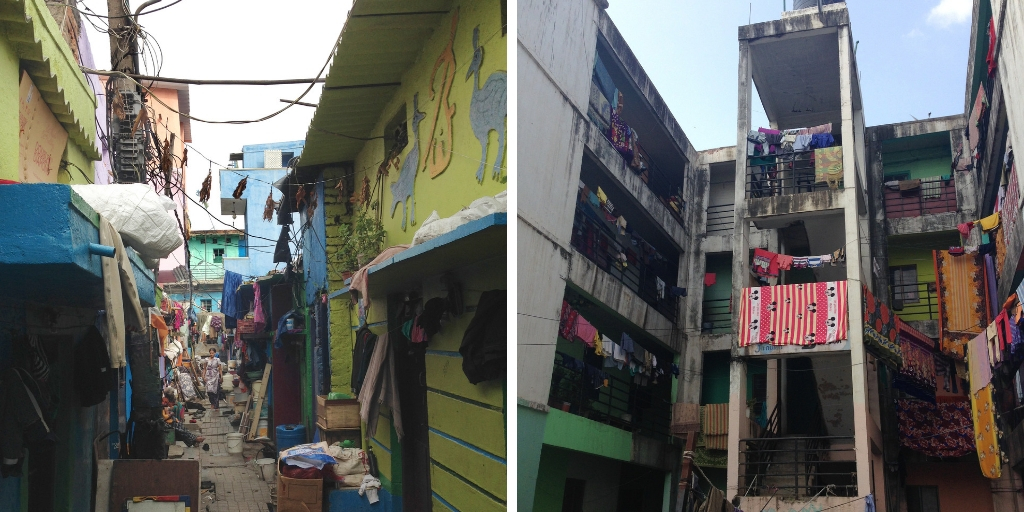Case Studies of Indian Slums Reveal Unique Narratives and Leadership Histories
January 25, 2019

Approximately one billion people live in slums worldwide, yet relatively little is known about how they are settled, how they change over time or how social, political and economic dynamics operate within them. Even the process of identifying what counts as a slum can be complicated by the vast difference between one settlement and another as well as how slums are documented in official government records.
 Duke doctoral student Emily Rains (Public Policy and Political Science) spent two years examining the characteristics and social dynamics of Indian slums as a member of the Studying the Real ‘Slums’ in Bangalore, Patna and Jaipur team. Last spring, Rains received a Bass Connections Student Research Award to explore the range of conditions within and across settlements in Bangalore as well as the political strategies slum residents employ to improve these conditions. Her project is mentored by Anirudh Krishna. Recently, she shared this update:
Duke doctoral student Emily Rains (Public Policy and Political Science) spent two years examining the characteristics and social dynamics of Indian slums as a member of the Studying the Real ‘Slums’ in Bangalore, Patna and Jaipur team. Last spring, Rains received a Bass Connections Student Research Award to explore the range of conditions within and across settlements in Bangalore as well as the political strategies slum residents employ to improve these conditions. Her project is mentored by Anirudh Krishna. Recently, she shared this update:
Personal Narratives across Five Slum Settlements in Bangalore
By Emily Rains (Ph.D. in Public Policy and Political Science)
During my first two years at Duke, I worked on the Bass Connections project, Studying the Real ‘Slums’ in Bangalore, Patna and Jaipur. Many ‘slums’ – neighborhoods that lack housing rights and basic services – are undocumented on official government lists. In order to locate and study Indian slums, our team combined satellite image analysis and fieldwork to build a database of several hundred slums across three cities.
My dissertation builds directly off of the work I started with our team. I am now working on developing and testing a framework to explain how slums vary in their degree of informality and what that implies for policy needs in different types of slums.

The Bass Connections Student Research Award enabled me to return to Bangalore and conduct detailed case studies of five slums that vary substantially in their level of service access and housing security. With the grant, I conducted nearly 100 in-depth interviews with area leaders and residents of these five neighborhoods, allowing me to learn about the unique narratives and leadership histories across the settlements.
These case studies are foundational for my overall dissertation project. I am currently transcribing and analyzing the interviews to formulate my framework and develop testable hypotheses. My next step will be to test the framework with the survey data our Bass Connections team previously collected.
When I complete my dissertation, I plan to disseminate the findings to policymakers. I hope the evidence will provide important insights for policy design in rapidly urbanizing areas in the Global South.
Learn More
- Check out this project team, and learn how their work is transforming research and policy on informal settlements in India.
- Meet all of the 2018 Follow-on Student Research Award grantees.
- Apply for 2019 Bass Connections Student Research Awards by March 1 at 5:00 p.m.
- Explore the 2019-2020 Bass Connections projects, and apply using our online application by February 15 at 5:00 p.m.
Photos of three neighborhoods in Bangalore by Emily Rains
